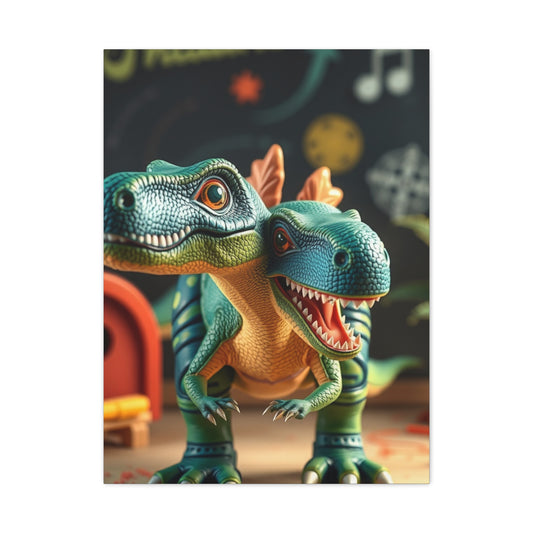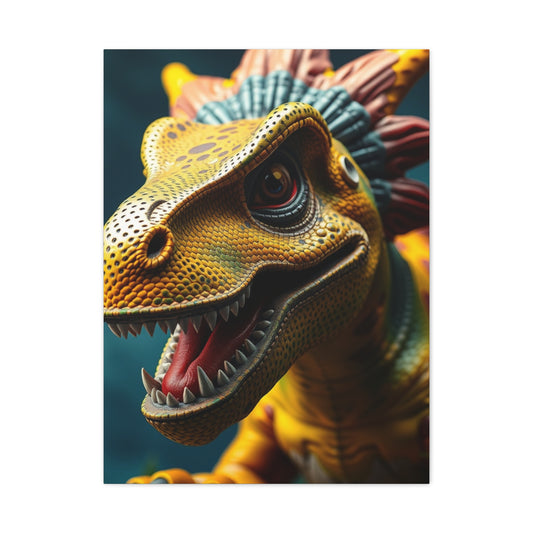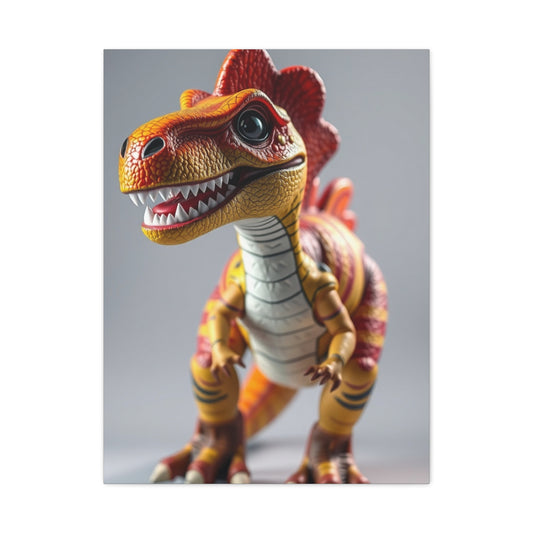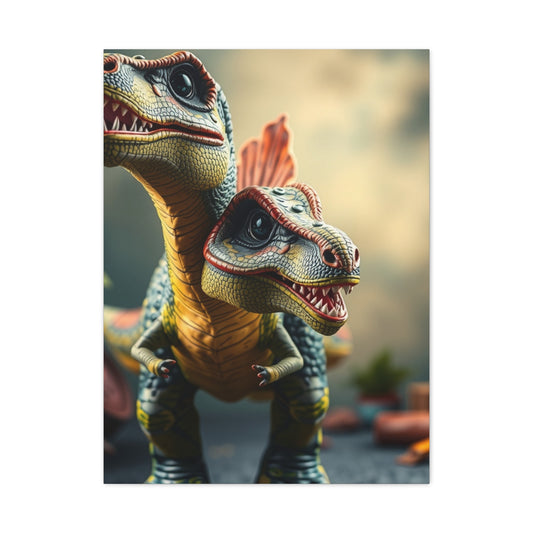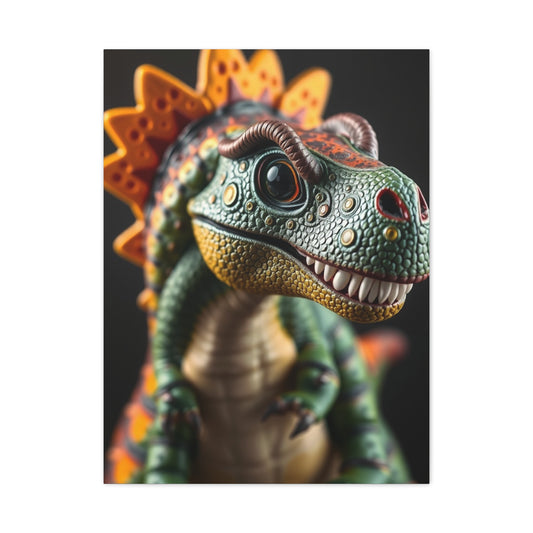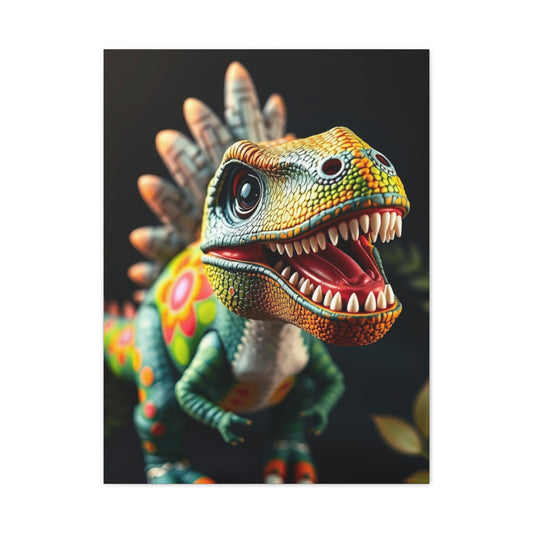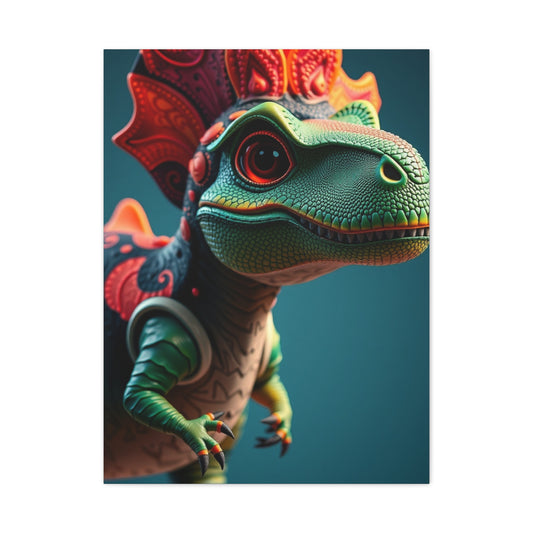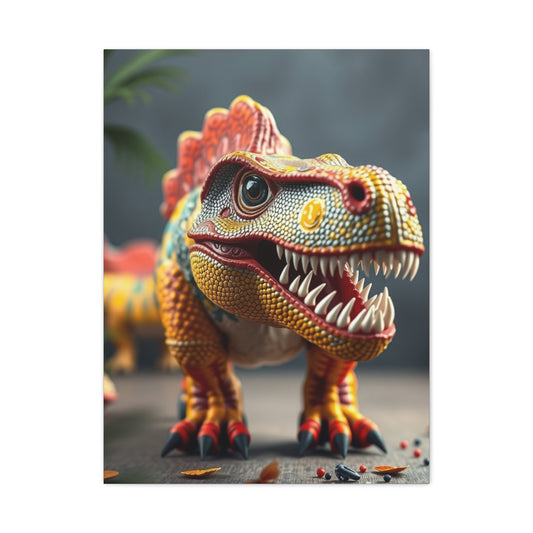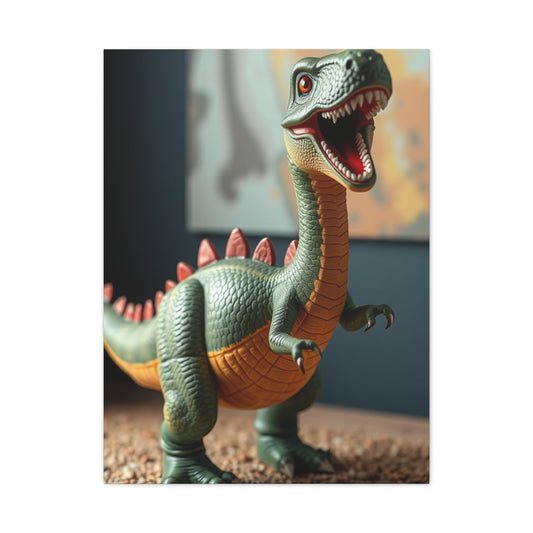Adorable Dinosaur Wall Art Ideas to Make Your Child’s Room Come Alive
Creating magical environments where children can flourish involves carefully selecting decorative elements that spark imagination while providing comfort and visual appeal. Among the most beloved themes that consistently captivate young minds are ancient reptilian creatures that once roamed our planet millions of years ago. These magnificent beasts continue to fascinate children across generations, making them perfect subjects for transforming ordinary walls into extraordinary adventures.
The appeal of prehistoric creature decorations extends far beyond simple visual enhancement. When thoughtfully incorporated into children's spaces, these artistic representations serve multiple purposes: fostering creativity, encouraging learning about natural history, and creating environments where young imaginations can soar. Parents and designers increasingly recognize the value of thematic decorations that combine entertainment with subtle learning opportunities.
Modern interpretations of these ancient creatures have evolved significantly from the fearsome depictions of earlier decades. Contemporary artists and designers now focus on creating friendly, approachable versions that maintain the wonder and excitement while ensuring comfort for young viewers. This shift reflects a deeper understanding of child development and the importance of creating nurturing environments that support healthy emotional growth.
The versatility of dinosaur-themed decorations allows for seamless integration into various design schemes, from minimalist modern nurseries to vibrant, adventure-filled playrooms. Whether seeking subtle accents or bold statement pieces, the range of available options ensures perfect matches for any space and preference.
Charming Prehistoric Characters for Young Adventurers' Sanctuaries
When selecting decorative elements featuring ancient reptilian creatures for children's rooms, the emphasis should be on creating welcoming, friendly atmospheres rather than intimidating displays. The most successful designs feature rounded edges, soft color palettes, and expressive faces that convey warmth and approachability. These characteristics help ensure that the decorations contribute positively to children's emotional well-being while maintaining their educational value.
The artistic interpretation of these prehistoric beings has undergone remarkable transformation in recent years. Artists now employ sophisticated understanding of child development principles to create images that balance accuracy with appeal. This approach results in decorations that can grow with children, remaining relevant and appreciated as young minds develop and mature.
Color psychology plays a crucial role in the effectiveness of children's room decorations. Successful prehistoric creature artwork often incorporates soothing blues and greens reminiscent of natural environments, combined with cheerful yellows and warm oranges that create feelings of happiness and security. These color combinations help establish rooms that feel both exciting and comforting.
The size and placement of decorative elements significantly impact their effectiveness. Large statement pieces can serve as focal points that anchor entire room designs, while smaller elements can be strategically placed to create visual interest without overwhelming young viewers. Understanding proper scale relationships ensures that decorations enhance rather than dominate living spaces.
Interactive elements within prehistoric creature decorations add layers of engagement that traditional static images cannot provide. Some modern designs incorporate textures, moveable parts, or elements that change appearance under different lighting conditions. These features encourage exploration and discovery, turning simple wall decorations into dynamic learning tools.
Vibrant Ancient Reptile Themed Decorations for Sleeping Quarters
Bedroom environments require special consideration when incorporating themed decorations, as these spaces must balance stimulation with tranquility. Successful prehistoric creature decorations for bedrooms often feature softer, more subdued interpretations that maintain interest while promoting restful sleep. The key lies in selecting pieces that provide gentle visual interest without creating overstimulation during bedtime routines.
The psychology of color becomes particularly important in bedroom applications. Cooler tones like soft blues and gentle greens can help create calming atmospheres, while strategic use of warmer accents maintains the excitement and wonder associated with prehistoric creatures. This balance ensures that bedrooms remain conducive to rest while preserving the adventurous spirit that makes these decorations so appealing.
Lighting considerations play a vital role in bedroom prehistoric creature decorations. Many successful designs incorporate elements that respond beautifully to various lighting conditions, from bright natural daylight to gentle evening illumination. Some pieces feature phosphorescent materials that provide subtle nighttime glows, creating magical experiences that ease bedtime transitions.
The positioning of bedroom decorations requires careful thought about viewing angles and daily routines. Pieces placed where children can see them from their beds should be particularly soothing and comforting, while decorations in other areas of the room can be more dynamic and engaging. This strategic approach creates environments that support both active play and peaceful rest.
Storage integration has become increasingly important in bedroom prehistoric creature decorations. Many modern designs incorporate functional elements like hooks, shelves, or organizational components that serve practical purposes while maintaining thematic consistency. This dual functionality maximizes value while contributing to organized, pleasant living spaces.
Gentle Prehistoric Companions for Infant Nursery Spaces
Nursery environments demand the most careful consideration when selecting decorative themes, as these spaces must support the needs of developing infants while creating welcoming atmospheres for caregivers. Prehistoric creature decorations designed for nurseries typically feature the softest, most nurturing interpretations possible, emphasizing comfort and security above adventure or excitement.
The developmental appropriateness of nursery decorations requires understanding of infant visual development. During the first months of life, babies respond best to high-contrast images and simple shapes. Successful nursery prehistoric creature decorations often begin with basic silhouettes and gradually introduce more complex details as children grow and develop.
Safety considerations take precedence in nursery environments, influencing every aspect of decoration selection and placement. All materials must be non-toxic, securely mounted, and positioned beyond infant reach. These requirements necessitate careful planning but need not compromise aesthetic appeal when properly implemented.
The emotional atmosphere created by nursery decorations significantly impacts both infants and caregivers. Gentle, smiling prehistoric creatures can provide comfort during nighttime feedings and diaper changes, while creating positive associations that support healthy development. The goal is establishing environments that feel safe, loving, and conducive to bonding.
Flexibility becomes crucial in nursery design, as these spaces must adapt to rapidly changing needs as children grow. Successful prehistoric creature decorations for nurseries often feature modular designs or easily updated elements that can evolve with developing children. This adaptability ensures long-term value and relevance.
The integration of sensory elements in nursery prehistoric creature decorations adds valuable developmental benefits. Textures, gentle sounds, or elements that create interesting shadows can provide appropriate stimulation that supports healthy growth and development. These features should be subtle and never overwhelming.
Expedition-Inspired Ancient Creature Displays for Youth Environments
Adventure-themed prehistoric creature decorations transform ordinary children's rooms into exciting exploration zones where young adventurers can embark on imaginary journeys through ancient worlds. These decorations typically feature more dynamic compositions, depicting prehistoric creatures in action-packed scenarios that inspire creative play and storytelling.
The narrative potential of adventure-themed decorations extends far beyond simple visual appeal. Well-designed pieces can suggest stories, encourage role-playing, and provide inspiration for creative activities. Children often develop elaborate scenarios around their room decorations, using them as launching points for imaginative adventures that support cognitive development.
Environmental storytelling through decoration placement creates immersive experiences that transform entire rooms into prehistoric landscapes. Strategic arrangement of various elements can suggest journeys through different prehistoric periods, encounters between different species, or explorations of ancient environments. This comprehensive approach maximizes the impact of individual pieces while creating cohesive, engaging atmospheres.
The educational value of adventure-themed prehistoric creature decorations can be substantial when properly implemented. Many successful designs incorporate accurate anatomical details, period-appropriate environmental elements, and subtle learning opportunities that encourage curiosity about natural history. This approach allows decorations to serve dual purposes as both entertainment and informal education.
Interactive storytelling opportunities emerge naturally from well-designed adventure-themed decorations. Parents and children can develop ongoing narratives around the prehistoric creatures depicted, creating shared experiences that strengthen bonds while encouraging language development and creative thinking.
Three-Horned Giant Displays for Youth Wall Spaces
Among the most recognizable prehistoric creatures, the three-horned giant offers perfect subjects for children's decorations due to its distinctive appearance and generally peaceful nature. The creature's impressive frill and facial horns provide striking visual elements that translate beautifully into artistic interpretations, while its herbivorous lifestyle ensures appropriateness for young viewers.
The facial structure of these magnificent creatures presents unique artistic opportunities. The elaborate frills can be reimagined with countless creative variations, from simple geometric patterns to complex, colorful designs that add visual interest while maintaining the creature's essential character. This flexibility allows artists to create pieces that range from scientifically accurate to whimsically interpretive.
Family dynamics among three-horned giants provide excellent subjects for decorations that emphasize nurturing relationships and protective instincts. Depictions of adult creatures caring for young, teaching survival skills, or defending families create positive role models that resonate with children's understanding of family structures and relationships.
The size variations within three-horned giant species allow for decorations that can accommodate different spatial requirements. From massive adults that command attention as statement pieces to adorable juveniles perfect for smaller spaces, the range of size options ensures suitable choices for any room configuration.
Color experimentation with three-horned giant decorations often yields spectacular results. While maintaining recognizable features, artists can explore vibrant color combinations that would never occur in nature, creating eye-catching displays that capture children's attention while sparking conversations about creativity and imagination.
The peaceful browsing behavior of these creatures provides opportunities for decorations that emphasize harmony with nature. Scenes depicting three-horned giants in lush prehistoric environments, peacefully coexisting with other species, reinforce positive environmental messages that align with contemporary conservation values.
Long-Necked Gentle Giants for Youth Canvas Displays
The towering, long-necked giants of prehistoric times represent some of the most awe-inspiring creatures ever to walk the Earth, and their gentle herbivorous nature makes them perfect subjects for children's decorations. These magnificent beings, with their impossibly long necks and peaceful dispositions, offer opportunities to create decorations that emphasize wonder, growth, and the beauty of reaching for great heights.
The extraordinary proportions of these creatures present unique artistic challenges and opportunities. Their towering necks can be used to create vertical compositions that draw the eye upward, making rooms feel larger and more open. This characteristic makes them particularly valuable in smaller spaces where creating a sense of expansiveness is desired.
The feeding behaviors of long-necked giants provide rich material for educational decorations that can subtly introduce concepts about adaptation, ecosystem relationships, and peaceful coexistence. Depictions of these creatures reaching for treetops or interacting with their environments can spark conversations about how different body structures serve different purposes in nature.
Social behaviors among these gentle giants offer opportunities for decorations that emphasize community, cooperation, and mutual support. Herding behaviors, protective instincts toward young, and peaceful interactions with other species provide positive examples that align with values parents want to instill in their children.
The sheer scale of these creatures allows for dramatic decorations that can transform entire walls into prehistoric vistas. Large-scale murals or multiple coordinated pieces can create immersive environments that transport children to ancient worlds, encouraging imaginative play and exploration.
Environmental integration within long-necked giant decorations often features lush, verdant landscapes that emphasize the abundance and diversity of prehistoric plant life. These botanical elements add layers of visual interest while providing opportunities to discuss ecosystems, plant evolution, and environmental relationships.
Amusing Prehistoric Beast Displays for Youth Environments
Humor plays a vital role in children's development, and prehistoric creature decorations that incorporate comedic elements can provide daily doses of joy while maintaining educational value. These amusing interpretations often feature exaggerated expressions, playful poses, or unexpected scenarios that delight young viewers while building positive associations with learning about natural history.
The anthropomorphization of prehistoric creatures in humorous decorations requires careful balance between entertainment and respect for the actual animals. Successful pieces maintain recognizable anatomical features while adding expressive elements that convey personality and emotion. This approach allows children to connect emotionally with these ancient beings while learning about their characteristics.
Situational comedy within prehistoric creature decorations often involves placing these ancient beings in anachronistic scenarios that children find relatable and amusing. Whether depicting dinosaurs engaging in modern activities or showing them in everyday situations, these playful interpretations encourage laughter while sparking conversations about similarities and differences between past and present.
The timing of introducing humorous prehistoric creature decorations can impact their effectiveness. Very young children often respond best to simple, obvious humor, while older children appreciate more sophisticated comedic elements. Understanding developmental stages helps ensure that humorous decorations provide appropriate entertainment value.
Interactive humor elements in prehistoric creature decorations can enhance their appeal and longevity. Pieces that reveal hidden comedic details upon closer inspection, or decorations that can be rearranged to create different scenarios, provide ongoing entertainment value that static images cannot match.
The social aspects of humorous prehistoric creature decorations often make them excellent conversation starters for children and visitors. Funny depictions can break ice, encourage sharing, and provide comfortable entry points for children who might otherwise feel shy about discussing their interests or room decorations.
Soft-Toned Prehistoric Creature Art for Female Youth Bedrooms
Creating appealing decorations for children who prefer gentler aesthetic approaches requires understanding different visual preferences while avoiding limiting stereotypes. Soft-toned prehistoric creature decorations can appeal to any child who appreciates delicate beauty, regardless of gender, while maintaining the wonder and excitement that makes these ancient beings so compelling.
Pastel color palettes in prehistoric creature decorations create dreamy, ethereal atmospheres that transform ordinary rooms into fairy-tale environments. These softer interpretations often feature lavender, pink, mint green, and cream tones that create soothing visual experiences while maintaining the distinctive characteristics that make each creature recognizable.
The artistic styles employed in soft-toned prehistoric creature decorations often draw inspiration from watercolor paintings, creating flowing, organic shapes that feel gentle and approachable. These softer edges and blended colors contribute to peaceful atmospheres while maintaining visual interest and educational value.
Floral and botanical elements frequently accompany soft-toned prehistoric creature decorations, creating lush, garden-like environments that emphasize harmony between ancient life forms and their natural habitats. These additional elements provide opportunities for discussing plant evolution, ecosystem relationships, and environmental beauty.
The emotional resonance of soft-toned prehistoric creature decorations often emphasizes nurturing behaviors, family bonds, and peaceful coexistence. Scenes depicting parent creatures caring for young, creatures interacting gently with their environments, or peaceful moments in prehistoric landscapes create positive emotional associations with these ancient beings.
Texture incorporation in soft-toned decorations can add tactile appeal that enhances their sensory impact. Fabric elements, raised surfaces, or mixed media approaches can create decorations that invite touch and exploration, adding layers of engagement beyond simple visual appreciation.
Watercolor-Style Ancient Reptile Prints for Infant Spaces
The gentle, flowing nature of watercolor artistic styles creates particularly appealing decorations for the youngest children, as these soft, organic approaches feel nurturing and comforting while maintaining visual interest. Watercolor prehistoric creature decorations often feature blended colors, soft edges, and dreamy qualities that create peaceful, welcoming atmospheres.
The transparency and layering characteristics of watercolor techniques allow for subtle, sophisticated color combinations that can complement various nursery color schemes. These artistic approaches often incorporate unexpected color relationships that create visual harmony while maintaining the distinctive features that make prehistoric creatures recognizable.
The organic, natural feeling of watercolor prehistoric creature decorations aligns well with contemporary preferences for natural, non-toxic nursery environments. These artistic styles suggest connections to nature, growth, and organic development that resonate with parents seeking to create healthy, nurturing spaces for their children.
Seasonal color variations within watercolor prehistoric creature decorations provide opportunities for creating decorations that feel fresh and appropriate throughout the year. Spring pastels, summer brights, autumn earth tones, and winter cool colors can all be incorporated into prehistoric creature themes while maintaining artistic coherence.
The meditative quality of watercolor artwork can contribute to calming nursery atmospheres that support rest and relaxation. The flowing, peaceful nature of these artistic styles helps create environments conducive to sleep while maintaining enough visual interest to provide gentle stimulation during wakeful periods.
Abstract elements within watercolor prehistoric creature decorations allow for creative interpretations that balance recognition with artistic freedom. These approaches can create unique, one-of-a-kind feeling decorations while maintaining the essential characteristics that make prehistoric creatures appealing to children.
Simplified Prehistoric Creature Art for Contemporary Youth Spaces
Minimalist approaches to prehistoric creature decorations appeal to families preferring clean, uncluttered room designs while maintaining the excitement and educational value of prehistoric themes. These simplified interpretations often emphasize essential shapes, limited color palettes, and strong geometric elements that create sophisticated displays suitable for modern interior design approaches.
The geometric abstraction of prehistoric creature forms can create stunning decorations that work well in contemporary design contexts while maintaining recognizable characteristics. These simplified approaches often highlight the most distinctive features of each creature, creating memorable images that support learning and recognition.
Color limitation in minimalist prehistoric creature decorations can create sophisticated, gallery-quality displays that appeal to design-conscious parents while remaining engaging for children. Monochromatic schemes, limited palettes, or strategic use of single accent colors can create powerful visual impact with minimal complexity.
The negative space utilization in minimalist decorations often becomes as important as the depicted elements themselves. Thoughtful use of empty space can create balanced compositions that feel calm and sophisticated while maintaining enough visual interest to engage young viewers.
Scalability considerations in minimalist prehistoric creature decorations ensure that these simplified approaches work effectively at various sizes, from small accent pieces to large statement decorations. The clarity of minimalist designs often translates well across different scales without losing impact or recognition.
Material exploration within minimalist prehistoric creature decorations can add subtle interest through texture, finish, or substrate choices that enhance the simplified designs without adding visual complexity. These material considerations can elevate simple designs into sophisticated decorative elements.
Personalized Prehistoric Creature Name Displays
Custom decorations that incorporate children's names with prehistoric creature themes create deeply personal connections that make rooms feel truly special and individually designed. These personalized elements often become treasured possessions that children value throughout their development while providing constant reinforcement of literacy skills.
The integration of typography with prehistoric creature imagery requires careful attention to readability, age-appropriateness, and visual harmony. Successful designs balance the excitement of prehistoric themes with clear, readable text that supports name recognition and early literacy development.
Personalization options extend beyond simple name inclusion to encompass various custom elements like favorite colors, specific creature preferences, or meaningful dates. These additional customization opportunities allow for decorations that truly reflect individual children's personalities and interests.
The developmental progression of personalized decorations can be planned to grow with children, starting with simple name recognition and advancing to more complex literacy elements as children develop. This progression ensures long-term relevance and continued educational value.
Cultural sensitivity in personalized prehistoric creature decorations requires understanding diverse naming traditions and ensuring that custom elements respect and celebrate individual family backgrounds. This consideration helps create truly inclusive decorations that honor each child's unique identity.
The emotional significance of personalized decorations often extends beyond their immediate visual impact to create lasting memories and positive associations with learning, reading, and personal identity. These deeper connections can influence children's self-perception and confidence in positive ways.
Bathroom-Time Amusing Prehistoric Creature Art
Decorations designed specifically for bathroom environments require special consideration of moisture resistance, easy cleaning, and space constraints while maintaining the fun and educational value of prehistoric themes. These specialized decorations often feature waterproof materials and playful designs that make routine hygiene activities more enjoyable.
The practical requirements of bathroom decorations necessitate material choices that can withstand humidity, temperature variations, and regular cleaning without deteriorating. Successful bathroom prehistoric creature decorations often employ laminated prints, vinyl materials, or specially treated substrates that maintain their appearance and adhesion in challenging environments.
The entertainment value of bathroom decorations becomes particularly important for encouraging proper hygiene habits and making bathroom time more pleasant for children. Amusing prehistoric creature displays can transform necessary routines into enjoyable experiences while reinforcing positive associations with cleanliness and self-care.
The space constraints typical in bathroom environments require decorations that maximize visual impact while minimizing physical footprint. Successful bathroom prehistoric creature decorations often employ vertical compositions, corner placements, or multi-functional designs that serve decorative purposes without interfering with practical bathroom functions.
Water-resistant prehistoric creature decorations can incorporate educational elements about aquatic prehistoric life, creating thematic connections between the bathroom environment and ancient marine ecosystems. These connections can introduce children to marine paleontology while maintaining relevance to the bathroom setting.
The lighting considerations in bathroom environments often differ from other rooms, requiring decorations that look appealing under various lighting conditions, from bright overhead illumination to softer evening lighting. Successful bathroom prehistoric creature decorations account for these variations in their color choices and design elements.
Safety features in bathroom prehistoric creature decorations must include secure mounting systems that can withstand moisture exposure without creating hazards. All materials should be non-slip, non-toxic, and designed to maintain their integrity in humid environments over extended periods.
Size and Scale Considerations for Prehistoric Creature Displays
The proportional relationships between decorations and room spaces significantly impact their effectiveness and appeal. Prehistoric creature decorations must be sized appropriately for their intended environments to create proper visual balance while avoiding overwhelming or underwhelming effects that diminish their impact.
Room proportion analysis helps determine optimal sizes for prehistoric creature decorations in various space types. Large, dramatic pieces work well in spacious playrooms or family areas, while smaller, more intimate decorations suit bedrooms or quiet reading spaces. Understanding these relationships ensures decorative investments provide maximum impact.
Visual weight considerations extend beyond simple physical dimensions to include color intensity, composition complexity, and subject matter drama. A smaller decoration featuring bright colors or dynamic action may carry more visual weight than a larger piece with subdued colors and peaceful subjects.
Grouping strategies for multiple prehistoric creature decorations require understanding of visual relationships, spacing requirements, and thematic coherence. Successful groupings create unified displays that enhance overall room design while maintaining individual piece integrity and appeal.
Ceiling height impacts the effectiveness of prehistoric creature decorations, particularly those featuring tall creatures or vertical compositions. Understanding these relationships helps ensure that decorations feel proportionate and harmonious within their architectural contexts.
Future adaptability in size considerations allows for decorative schemes that can grow and change as children develop and room uses evolve. Planning for potential additions, rearrangements, or updates ensures that initial decoration investments remain relevant over extended periods.
Color Harmony in Prehistoric Creature Room Design
The color relationships between prehistoric creature decorations and existing room elements significantly impact overall design success and visual comfort. Understanding color theory principles helps create harmonious environments that support positive emotional responses while maintaining the excitement and educational value of prehistoric themes.
Complementary color schemes featuring prehistoric creatures can create dynamic, energetic displays that stimulate interest and engagement. These approaches often pair warm creature colors with cool background elements, or vice versa, creating visual tension that maintains interest without becoming overwhelming.
Analogous color approaches to prehistoric creature decorations create more peaceful, harmonious effects that work well in spaces intended for rest or quiet activities. These schemes typically employ colors adjacent on the color wheel, creating gentle transitions that feel naturally related and comfortable.
Monochromatic prehistoric creature decorations can create sophisticated, gallery-like displays that appeal to minimalist design preferences while maintaining enough visual interest to engage children. These approaches often employ various shades and tints of single colors to create depth and variation.
Accent color strategies allow prehistoric creature decorations to introduce controlled amounts of exciting color into otherwise neutral room schemes. This approach provides flexibility for parents who prefer subdued base colors but want to incorporate stimulating elements that appeal to children.
Seasonal color adaptation in prehistoric creature decorations can keep rooms feeling fresh and current throughout the year. Changeable elements or multiple decoration sets can provide variety while maintaining thematic consistency and avoiding the expense of complete room redesigns.
Material Quality and Safety Standards
The safety requirements for children's room decorations encompass multiple considerations including material toxicity, mounting security, edge treatments, and age-appropriateness. Prehistoric creature decorations must meet or exceed standard safety requirements while maintaining their aesthetic and educational appeal.
Non-toxic material certification ensures that prehistoric creature decorations pose no health risks to children who may touch, mouth, or otherwise interact with decorative elements. Quality manufacturers provide clear documentation of safety testing and material composition to support informed purchasing decisions.
Mounting security for prehistoric creature decorations requires appropriate hardware and installation methods that prevent accidents while ensuring decorations remain properly positioned over time. Professional installation may be advisable for larger or heavier pieces, particularly in earthquake-prone regions.
Edge treatment and corner safety considerations prevent injury risks from decorations with sharp edges or protruding elements. Quality prehistoric creature decorations designed for children's spaces typically feature rounded corners, smooth edges, and secure mounting systems that eliminate potential hazards.
Age-appropriate design elements ensure that prehistoric creature decorations remain suitable as children grow and develop. This includes avoiding small parts that could present choking hazards for younger children while maintaining visual appeal for older children who may have developed different preferences.
Fire safety compliance for prehistoric creature decorations includes using flame-resistant materials and avoiding placement near heat sources or electrical fixtures. Understanding local fire safety codes helps ensure that decorative choices support overall home safety requirements.
Installation and Placement Strategies
The positioning of prehistoric creature decorations within children's rooms significantly impacts their effectiveness, safety, and visual appeal. Strategic placement considers viewing angles, lighting conditions, safety requirements, and functional room uses to ensure optimal results from decorative investments.
Height considerations for prehistoric creature decorations must balance visibility for children with safety requirements and adult supervision needs. Decorations should be positioned where children can see and appreciate them while remaining safely out of reach if they include small parts or delicate elements.
Lighting interaction between prehistoric creature decorations and room illumination can dramatically impact their appearance and effectiveness. Natural light, artificial lighting, and directional lighting all affect how colors appear and how details are visible, requiring consideration during placement planning.
Furniture relationship planning ensures that prehistoric creature decorations complement rather than compete with functional room elements. Successful placement often involves coordinating decorations with bed positions, play areas, storage solutions, and other furniture to create harmonious, functional environments.
Safety zone maintenance around prehistoric creature decorations prevents accidents while ensuring that decorations remain accessible for viewing and appreciation. Understanding movement patterns within children's rooms helps identify optimal placement locations that maximize positive impact while minimizing risk.
Future flexibility in decoration placement allows for room evolution as children grow and needs change. Planning installation methods and positions that can accommodate future modifications helps protect decorative investments while supporting changing requirements.
Maintenance and Longevity of Prehistoric Creature Decorations
Proper care and maintenance of prehistoric creature decorations ensures continued appearance quality and safety performance over extended periods. Understanding appropriate cleaning methods, handling procedures, and environmental protection helps maximize the lifespan and value of decorative investments.
Cleaning procedures for prehistoric creature decorations vary based on materials, finishes, and environmental exposures. Gentle cleaning methods that remove dust and surface contamination without damaging colors or substrates help maintain appearance while ensuring hygienic conditions in children's environments.
Environmental protection strategies help prehistoric creature decorations withstand normal wear and exposure to sunlight, temperature variations, and humidity changes. Understanding these protection methods helps prevent premature fading, warping, or other deterioration that could compromise appearance or safety.
Damage prevention techniques include proper handling during cleaning, protection from physical impact, and avoidance of harsh chemicals or excessive moisture exposure. These preventive measures help ensure that prehistoric creature decorations continue providing value throughout their intended lifespans.
Restoration possibilities for vintage or damaged prehistoric creature decorations can extend their useful lives while maintaining their appeal and safety. Understanding when professional restoration is advisable versus when replacement is more practical helps make informed decisions about decoration maintenance.
Storage considerations for removable or seasonal prehistoric creature decorations protect investments during periods of non-use while preventing damage that could compromise future installations. Proper storage methods help maintain decoration quality and ensure availability for future use.
Budget-Conscious Prehistoric Creature Decoration Solutions
Creating appealing prehistoric creature decorations need not require substantial financial investment when approached strategically. Understanding various options, from high-end custom pieces to budget-friendly alternatives, helps families create engaging environments within their available resources while maintaining quality and safety standards.
DIY opportunities for prehistoric creature decorations can provide cost-effective solutions while creating opportunities for family bonding and creative expression. Simple projects like hand-painted canvases, printed materials, or craft-based creations can yield personalized results at fraction of commercial costs.
Printable prehistoric creature decoration options provide immediate gratification and minimal investment while offering customization opportunities. High-quality printable designs can be produced at home or through local printing services, providing professional-looking results with maximum flexibility.
Seasonal sales and promotional opportunities for prehistoric creature decorations can provide access to higher-quality pieces at reduced costs. Understanding retail cycles and planning purchases around promotional periods helps maximize decorative budgets while accessing desired items.
Multipurpose prehistoric creature decorations that serve both decorative and functional purposes provide enhanced value by addressing multiple needs simultaneously. These pieces might incorporate storage, lighting, or organizational elements while maintaining their thematic appeal and visual impact.
Investment prioritization strategies help families allocate decoration budgets effectively by identifying which elements provide maximum impact and longevity. Understanding these priorities ensures that available resources create optimal results while supporting long-term satisfaction with decorative choices.
Coordinating Prehistoric Creature Themes with Room Furniture
Successful integration of prehistoric creature decorations with existing furniture requires understanding color relationships, style compatibility, and functional coordination. These considerations ensure that decorative elements enhance rather than conflict with practical room elements while creating cohesive, appealing environments.
Furniture style compatibility with prehistoric creature decorations spans various design approaches, from traditional to contemporary. Understanding how different decorative styles work with various furniture types helps create harmonious environments that feel intentional and well-planned rather than haphazard or conflicted.
Color coordination between prehistoric creature decorations and room furniture can be achieved through various strategies including complementary relationships, shared accent colors, or neutral base schemes that allow decorations to provide primary color interest. These approaches ensure visual harmony while maintaining decorative impact.
Functional integration opportunities arise when prehistoric creature decorations can coordinate with furniture purposes, such as reading areas enhanced by gentle herbivore decorations or play zones energized by more dynamic predator displays. This coordination supports room functions while maintaining thematic consistency.
Scale relationships between decorations and furniture require consideration of proportional harmony and visual balance. Large furniture pieces can support more substantial decorations, while delicate furniture may be overwhelmed by dramatic decorative elements, requiring careful size selection.
Flexibility planning for furniture and decoration coordination allows for future changes as children grow and preferences evolve. Selecting decorations that can work with various furniture arrangements provides long-term adaptability while protecting decorative investments.
Seasonal Adaptation of Prehistoric Creature Displays
The ability to modify or update prehistoric creature decorations throughout the year provides opportunities for maintaining visual freshness while teaching children about seasonal changes, adaptation, and environmental variety. This approach can extend the life and appeal of decorative investments while providing ongoing educational opportunities.
Spring renewal themes in prehistoric creature decorations can emphasize growth, new life, and environmental awakening after winter dormancy. These seasonal adaptations might feature young creatures, budding plant life, or scenes depicting prehistoric spring activities that parallel contemporary seasonal experiences.
Summer adventure modifications to prehistoric creature decorations can highlight active exploration, abundant vegetation, and peak environmental conditions that encourage outdoor thinking and physical activity. These adaptations often feature brighter colors and more dynamic compositions that reflect summer energy levels.
Autumn preparation themes in prehistoric creature decorations can introduce concepts about seasonal change, preparation for winter, and natural cycles that affect all living things. These educational elements help children understand environmental relationships while maintaining engagement through appealing prehistoric subjects.
Winter survival adaptations in prehistoric creature decorations can teach children about resilience, resource management, and adaptation to challenging conditions. These themes can build confidence and problem-solving thinking while providing comfort during colder months when outdoor activities may be limited.
Holiday integration possibilities allow prehistoric creature decorations to participate in seasonal celebrations without abandoning their educational and thematic value. Creative adaptations can incorporate holiday elements while maintaining scientific accuracy and prehistoric authenticity.
Custom Design Options for Prehistoric Creature Decorations
Personalization opportunities in prehistoric creature decorations extend far beyond simple name additions to encompass custom colors, specific creature preferences, room-specific sizing, and unique compositional elements that create truly individual decorative solutions. These custom approaches ensure perfect fits for specific requirements while maximizing satisfaction and long-term appeal.
Artist collaboration possibilities provide access to professional creative expertise while ensuring custom prehistoric creature decorations meet exact specifications and quality standards. Working with experienced artists can yield unique pieces that become treasured family heirlooms while supporting artistic communities.
Size customization for prehistoric creature decorations allows for perfect proportional relationships within specific room contexts. Custom sizing ensures optimal visual impact while accommodating architectural constraints, furniture arrangements, and other practical considerations that affect decoration effectiveness.
Color matching services for prehistoric creature decorations can coordinate perfectly with existing room elements, ensuring harmonious color relationships that enhance rather than conflict with established design schemes. These services provide professional color expertise while maintaining thematic integrity.
Compositional modifications allow for prehistoric creature decorations that tell specific stories, emphasize particular values, or incorporate meaningful personal elements. These custom narratives can create decorations with deep personal significance while maintaining broad appeal and educational value.
Multi-piece coordination in custom prehistoric creature decorations can create comprehensive room themes that work together to establish immersive environments. These coordinated approaches often provide better value and more dramatic impact than individual pieces while ensuring perfect thematic consistency.
Space Planning for Comprehensive Prehistoric Themes
Creating cohesive prehistoric creature environments requires comprehensive planning that considers traffic patterns, functional zones, storage needs, and growth accommodation. Successful prehistoric-themed rooms balance thematic consistency with practical functionality while maintaining flexibility for future modifications.
Traffic flow considerations ensure that prehistoric creature decorations enhance rather than impede room functionality. Strategic placement allows for easy movement while maximizing visibility and impact of decorative elements. Understanding daily activity patterns helps optimize decoration positions for maximum effectiveness.
Functional zone integration allows prehistoric creature decorations to support specific room activities while maintaining thematic consistency. Sleep areas, play zones, study spaces, and storage areas can each feature appropriate prehistoric elements that enhance their intended purposes.
Storage integration within prehistoric creature themes provides practical functionality while maintaining decorative appeal. Storage solutions designed to complement prehistoric themes can reduce clutter while contributing to overall room aesthetics and organization.
Growth accommodation planning ensures that prehistoric creature decoration schemes can adapt as children develop and room needs change. Flexible design approaches allow for modifications without requiring complete redecoration, protecting investments while supporting evolving requirements.
Multi-child considerations in prehistoric creature room planning must account for different ages, preferences, and developmental stages when multiple children share spaces. Successful approaches often incorporate elements that appeal to various age groups while maintaining overall coherence.
Conclusion
The world of prehistoric creature decorations for children offers virtually unlimited possibilities for creating engaging, educational, and emotionally supportive environments that can profoundly impact young lives. From gentle nursery displays featuring soft, nurturing interpretations to exciting adventure scenes that inspire exploration and discovery, these decorative themes provide unique combinations of entertainment, education, and aesthetic appeal that few other subjects can match.
The evolution of prehistoric creature decorations reflects broader understanding of child development, educational theory, and family dynamics. Contemporary approaches emphasize creating positive, supportive environments that encourage learning while providing comfort and security. This sophisticated understanding has led to decorative options that serve as more than mere visual adornments but as active participants in a child’s growth and development. By blending imagination with learning, prehistoric creature-themed décor transforms children's spaces into places where curiosity thrives, creativity flourishes, and important developmental milestones are nurtured.
The appeal of prehistoric creatures, particularly dinosaurs, lies in their timeless fascination with young minds. Their massive forms, unique features, and mysterious existence evoke wonder and excitement, making them ideal subjects for décor that both educates and entertains. Whether through bold, colorful dinosaur murals or soft, playful plush creatures, these designs can instill a sense of awe and discovery. As children encounter the magnificent scale of these ancient beings, they also learn valuable lessons about nature, history, and the passage of time.
Beyond their educational value, prehistoric creature decorations also play an important role in fostering emotional security. The nurturing representations of these creatures, often depicted in friendly, approachable styles, provide comfort and familiarity, making children feel safe in their spaces. This combination of fun and warmth is essential in cultivating an environment where children can feel relaxed, confident, and ready to explore the world around them.
The versatility of prehistoric creature decorations further enhances their appeal. These themes can be easily integrated into various design styles, from playful and whimsical to more mature and sophisticated. Whether creating a colorful jungle scene with vibrant dinosaurs or opting for a more subdued, nature-inspired design, the possibilities are endless. Parents can choose décor that reflects their child’s personality, preferences, and developmental stage, ensuring that the space is not only visually captivating but also emotionally meaningful.
In addition to their aesthetic qualities, prehistoric-themed décor can spark important conversations about science, evolution, and the natural world. As children grow older, they can transition from simple dinosaur imagery to more detailed, informative depictions that offer deeper knowledge of paleontology and prehistoric life. This gradual progression from imagination to education is one of the strengths of this design theme—it allows children to connect the fantasy world they see on their walls with the real world of scientific discovery.
In conclusion, prehistoric creature decorations are more than just a fun trend for children’s rooms—they are powerful tools for nurturing curiosity, emotional well-being, and intellectual development. These designs provide a unique and multifaceted approach to room décor that combines aesthetics, education, and emotional support. By introducing children to the wonders of the prehistoric world through creative, thoughtful design, parents and caregivers can create environments that are both inspiring and enriching. Ultimately, these decorations are a gateway to a world of discovery, where young imaginations can soar, learning becomes an exciting adventure, and the foundations for a lifelong love of knowledge are built.

